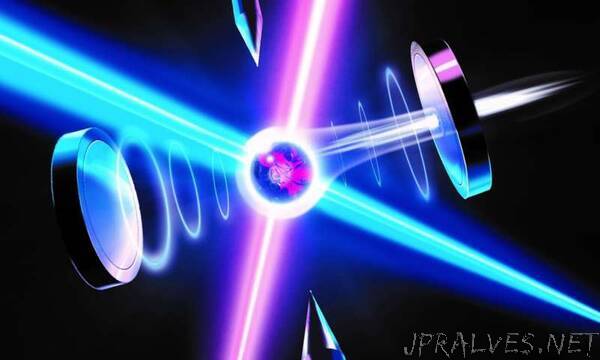
“Scientists from NUST MISIS (Russia) together with colleagues from Sweden, Hungary and USA found a way to manufacture stable qubits that would operate at room temperature, in contrast to the majority of existing analogues. This opens up new prospects for creating a quantum computer. Moreover, the results of the research can already be used to create high-accuracy magnetometers, biosensors and new quantum Internet technologies. The article is published in Nature Communications.
Quantum bit (qubit) is the smallest data storage unit in quantum systems, analogous to a well-known ‘bit’ in classical computing processes. So far, only prototypes of a quantum computer have been created, but scientists agree that in the future such a computer will have incredible computing capabilities. At the same time, quantum technologies are already in use in a number of areas, such as ultra-secure communication lines.
One of the main problems is the instability of qubits and extremely low temperature conditions required for their operation. Today, the most popular types of qubits are ones on superconducting materials or on single atoms. Both the first and the second exist only at extremely low temperatures, requiring enormous costs for constant system cooling. Semiconductor materials can become a promising analogue: for example, it is known that a qubit can be created on a point defect in a diamond lattice. The defect occurs due to the substitution of one carbon atom © with a nitrogen atom (N), with a defect, vacancy (V) nearby. It was already proved that such a qubit would successfully operate at room temperature.
Scientists from the National University of Science and Technology MISIS (Russia) and Linköping University (Sweden) together with colleagues from Hungary and USA found a way to manufacture stable semiconductor qubits using another material, silicon carbide (SiC). This is much simpler and more cost-effective in comparison with diamond. SiC was already considered as a promising material for creating qubits, but sometimes such qubits immediately degraded at room temperature. Hence, scientists aimed at figuring out the structural modification that would ensure stable operation of qubits.
“To create a qubit, a point defect in a crystal lattice is being excited using laser, and when a photon is emitted, this defect begins to luminesce. It was previously proved that six peaks are observed in the luminescence of SiC, named from PL1 to PL6, respectively. We found out that this is due to a specific defect, where a single ‘displaced’ atomic layer, called a stacking fault, appears near two vacant positions in the lattice”, Igor Abrikosov, Professor, scientific advisor of Materials Modeling and Development laboratory at NUST MISIS, Head of Theoretical Physics Division at the Department of Physics, Chemistry and Biology, Linköping University, explains.
Now that it is known which structural feature will make SiC qubits operate at room temperature, this feature can be created artificially, for instance by means of chemical vapor deposition. This development opens up new prospects for creating a quantum computer capable of operating at room temperature. Moreover, according to scientists, the results can already be used to create high-accuracy magnetometers, biosensors and new quantum Internet technologies.”
